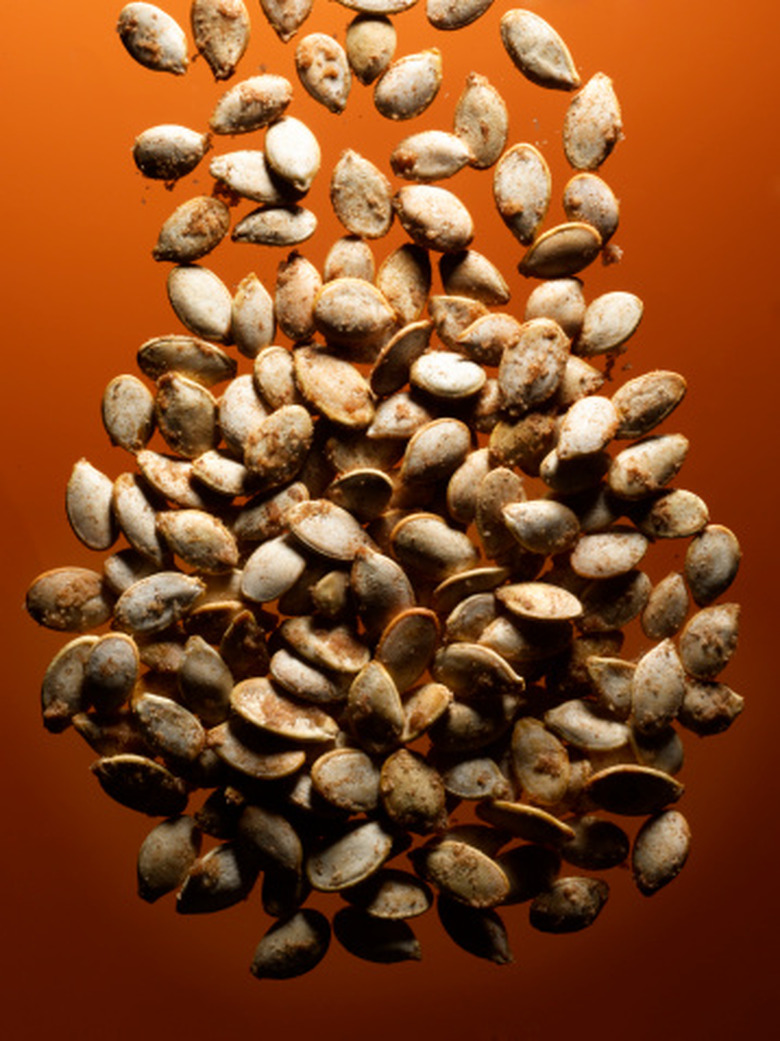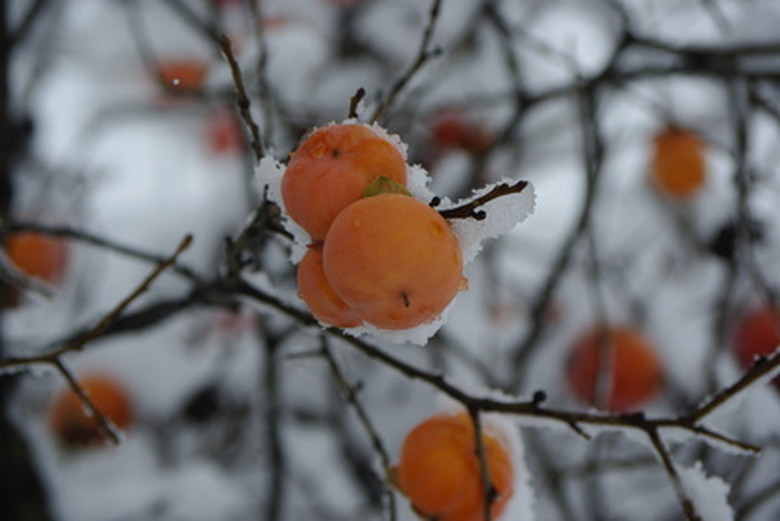How To Eat Persimmon Seeds
For hundreds of years, the common persimmon, or Diospyros virginiana L., has been used as a food source. Native Americans ate the ripe fruit right off the tree, or dried it, or made breads, jams, and jellies with it. They also made a beer-like drink from it, and roasted the seeds for flour. During the Civil War, persimmon seeds were dried, roasted, and ground into a coffee substitute, and the leaves were used for tea. During hard times, the persimmon has been used as a survival food.
Step 1
Choose persimmons that are orange-red to dark brown in color. Run the fruit through a food mill to remove seeds.
- For hundreds of years, the common persimmon, or Diospyros virginiana L., has been used as a food source.
- During the Civil War, persimmon seeds were dried, roasted, and ground into a coffee substitute, and the leaves were used for tea.
Step 2
Wash the persimmon seeds, and remove any pulp that may remain. Place them on paper towels to dry completely.
Step 3
Roasting persimmon seeds is similar to roasting pumpkin seeds. Place the seeds on a cookie sheet, and mix with oil or butter and your choice of seasonings. Roast the seeds for 30 minutes at 300 degrees Fahrenheit, stirring them every 10 minutes.
Step 4
Remove the seeds from the oven, and let them cool. You can eat them right away, or place them in a glass jar for storage.
- Wash the persimmon seeds, and remove any pulp that may remain.
- Place the seeds on a cookie sheet, and mix with oil or butter and your choice of seasonings.
Grow Persimmons From Seed
Persimmon trees (Diospyros spp.) wow year-round with their showy foliage and striking, golden-orange autumn fruit, which adds brilliant color to otherwise drab late-season landscaping. Most persimmon trees grown in landscaping are specific cultivars, such as 'Miller' (Diospyros virginiana 'Miller') and 'Fuyu' (Diospyros kaki 'Fuyu'). They were bred for specific traits and must be reproduced asexually using cuttings or grafts to preserve their favorable qualities. You can start the seeds immediately or store them in a cool, dry space until you're ready to use them. Persimmon seedlings form a long taproot early on, so they need to be grown in tall plastic containers that will allow the root to form without cramping it. Plant the seeds at a depth of 2 inches, and then set the pots in a warm, bright location. Bright, indirect sunlight and evenly moist soil provide the best conditions for persimmon seedlings. Keep them outdoors under sheltered conditions during the spring months before slowly exposing them to stronger sunlight over the course of one to two weeks.
- Persimmon trees (Diospyros spp.)
- Persimmon seedlings form a long taproot early on, so they need to be grown in tall plastic containers that will allow the root to form without cramping it.
Things Needed
- Oven
- Oven mitt
- 3 cups persimmon seeds
- Cookie sheet
- Parchment paper
- Spatula
- 3 teaspoons melted butter, olive oil, or vegetable oil
- Food mill
- Paper towels
- Mixing bowl
Warning
Make sure only ripe persimmons are used.
References
- USDA Forest Service: Common Persimmon
- Survival IQ: Persimmon
- USDA Forest Service: Diospyros Spp.
- USDA Forest Service: Diospyros Kaki – Japanese Persimmon
- Texas A&M University: Propagation Methods and Rootstocks for Fruit and Nut Species
- University of Kentucky College of Agriculture, Food and Environment: Persimmon (Diospyros Virginiana)
- University of Florida IFAS Extension: Diospyros Virginiana
- UC Davis Fruit and Nut Research and Information: Persimmon in California
- Purdue University Cooperative Extension Service: Persimmons

